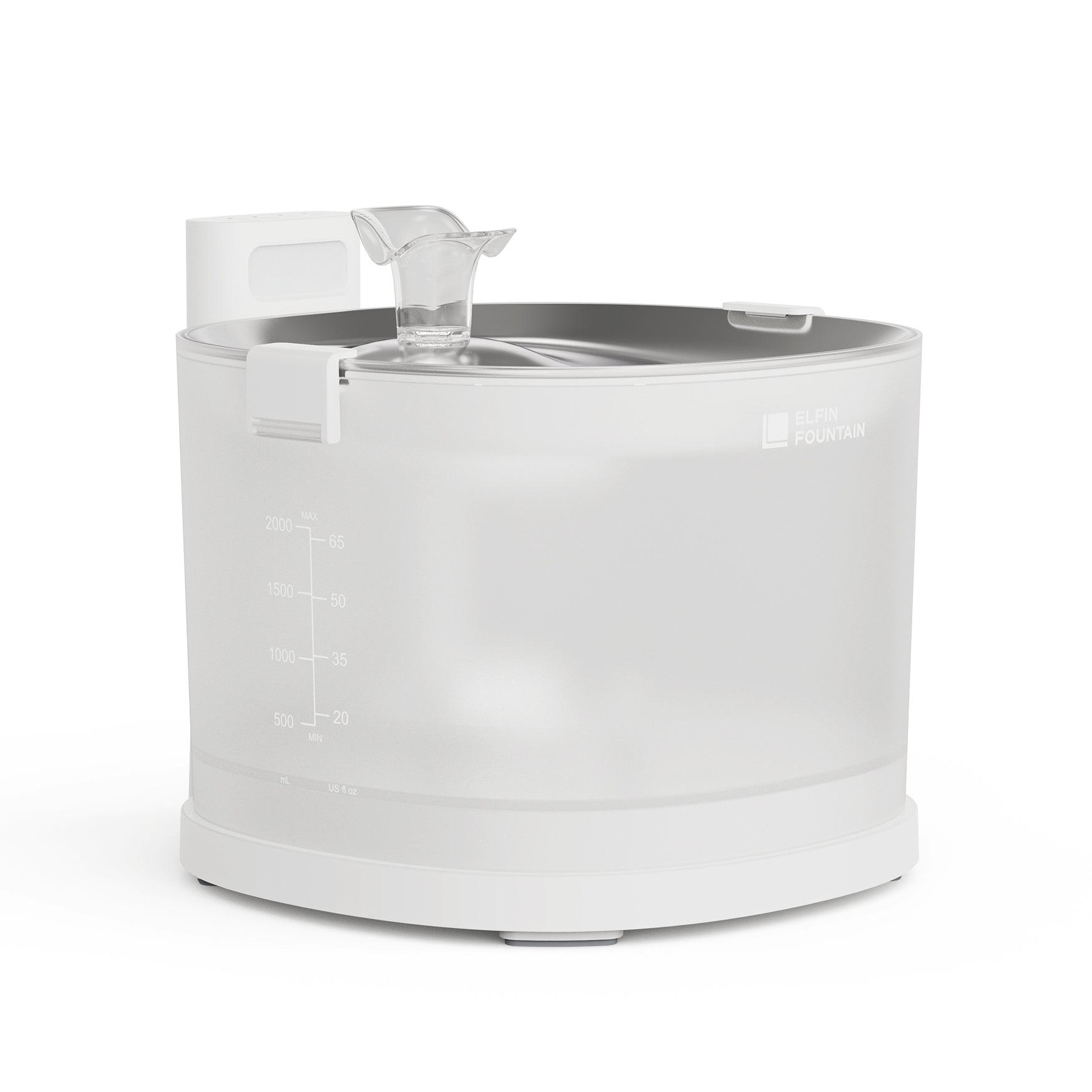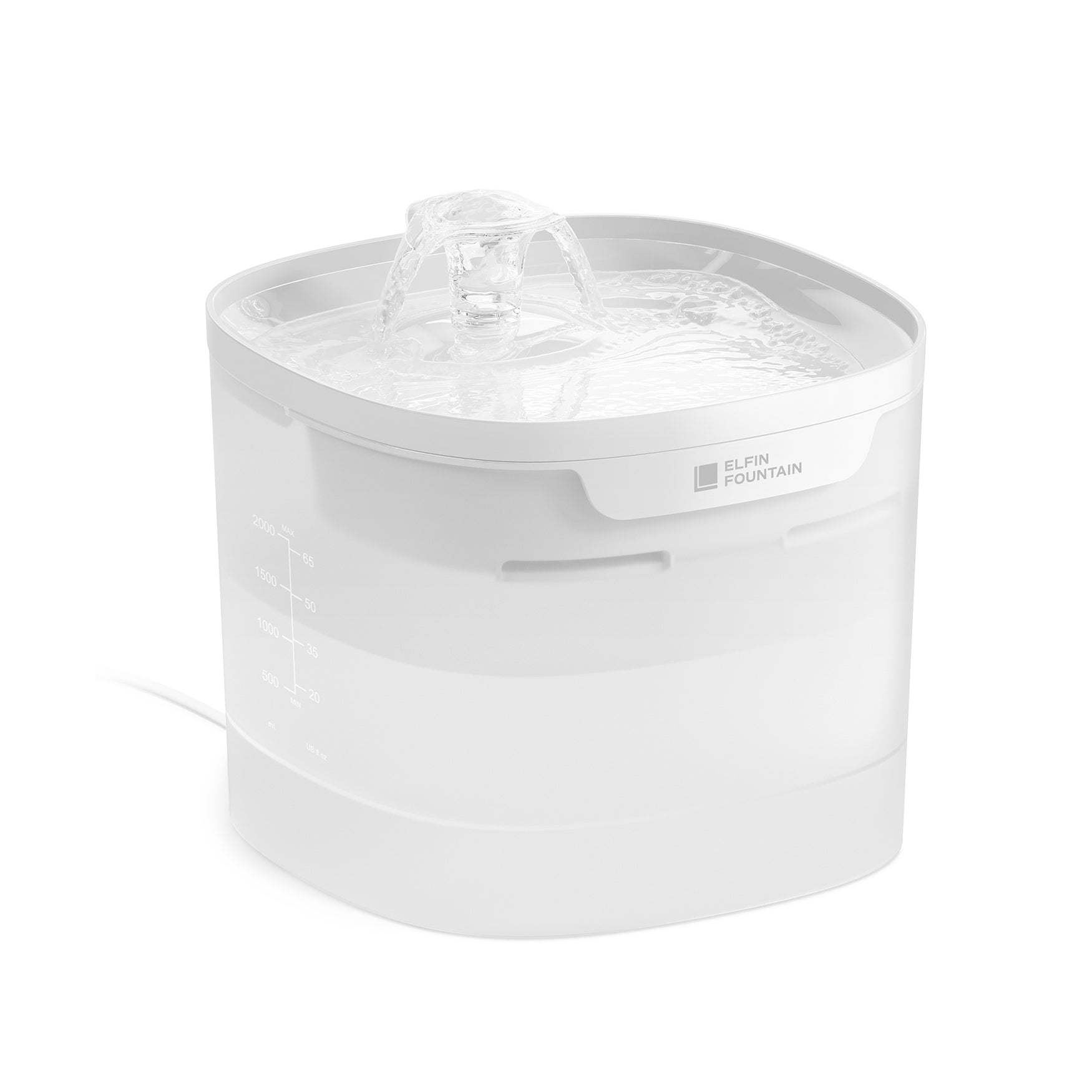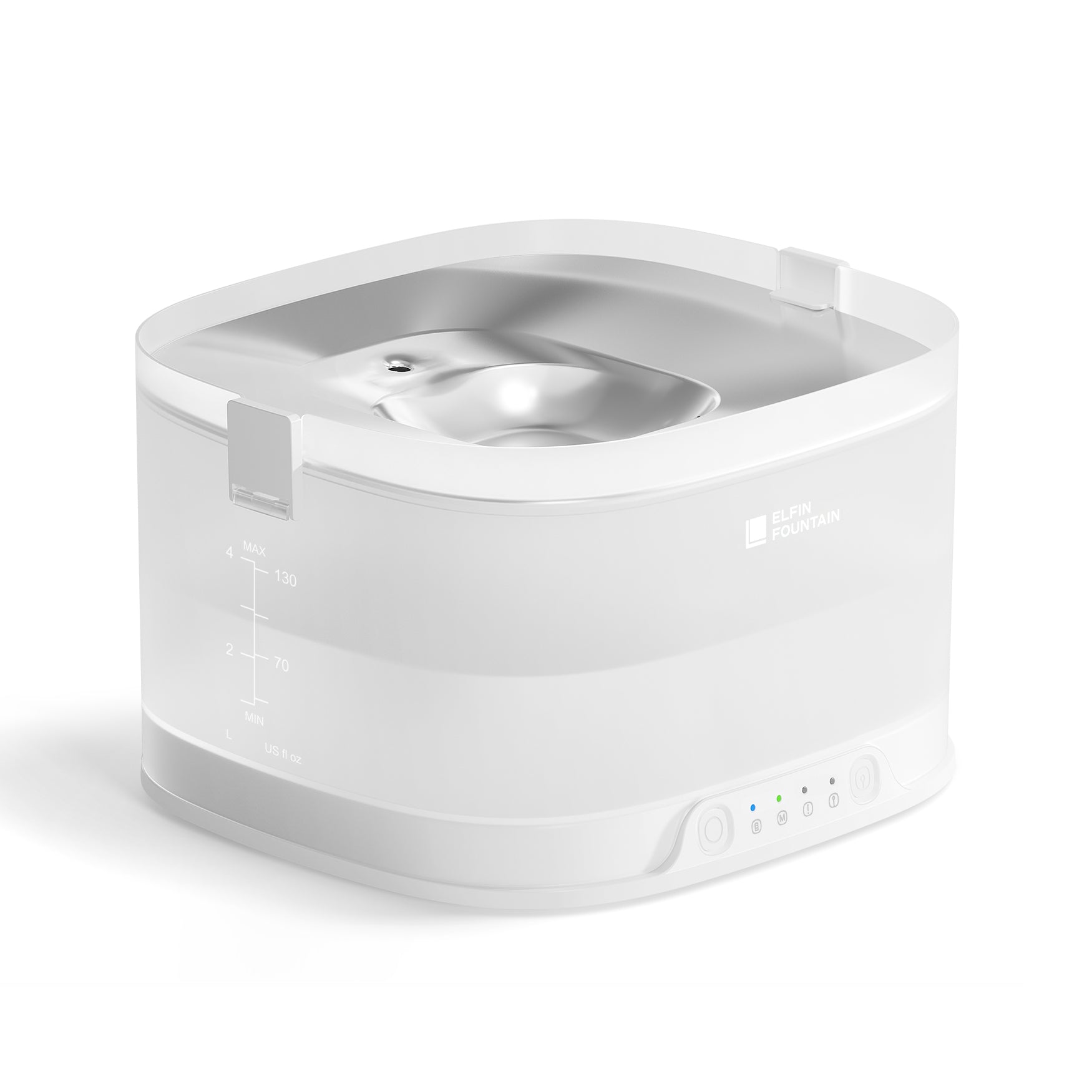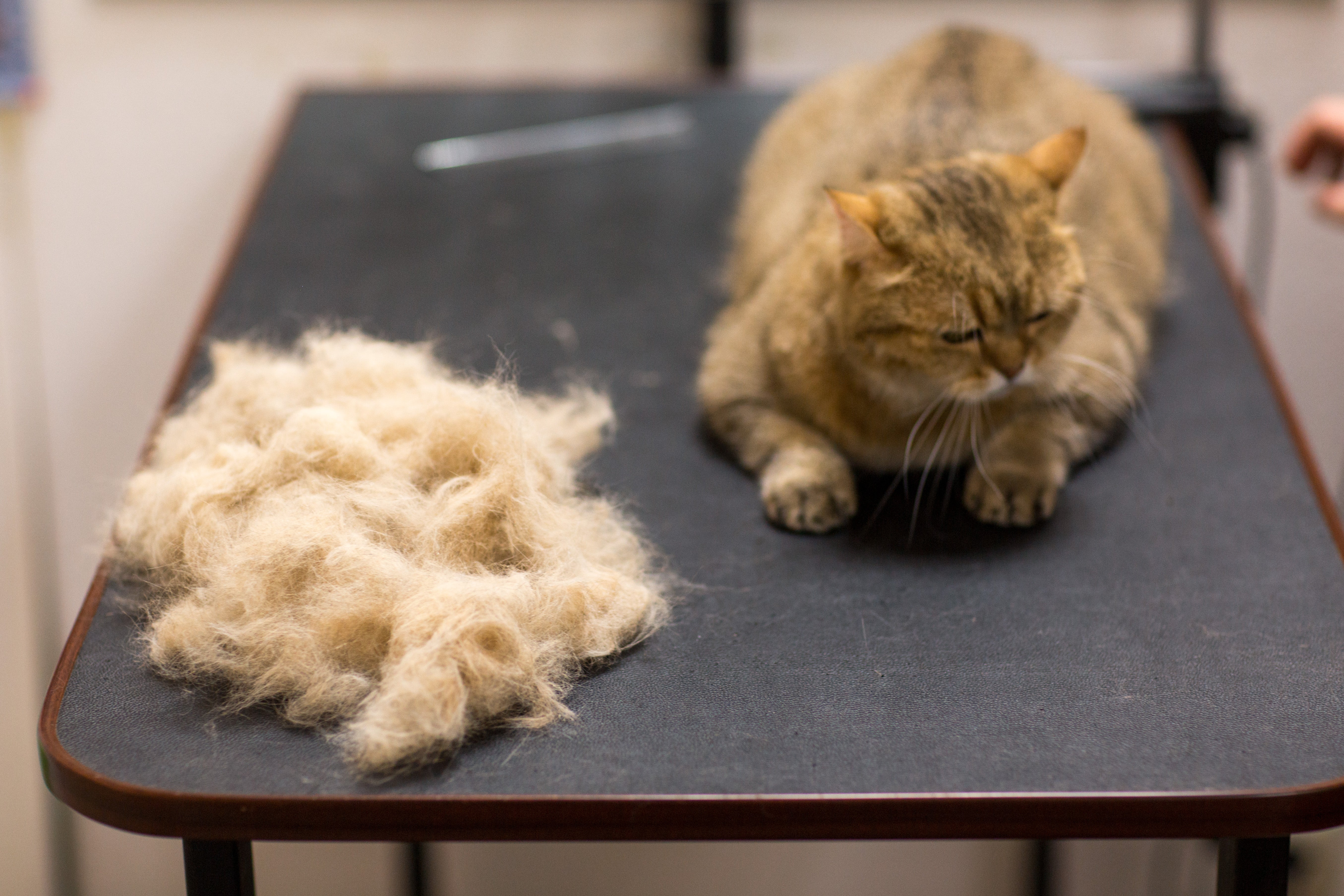Is your cat shedding like crazy in the AC? Ever noticed those subtle “thirst alarms” their bodies might be sending? Once a pet loses more than 10% of their body water, organ failure can happen fast. The first step to healthy hydration is learning to read the signs—here’s what every pet parent should know.
I. “I’m Thirsty!”: 5 Key Dehydration Red Flags in Cats
If your fur baby shows any of these, dehydration could be setting in:
1. Dry Gums & Tongue
Gently open your cat’s mouth and touch their gums. Healthy gums should be moist—think freshly cleaned microfiber. If they feel dry, sticky, or rough like tree bark, that’s a big warning sign. A dull, rough tongue is another clue: their saliva glands are running dry.
2. Skin Elasticity: The Pinch Test
Pinch the loose skin at the back of the neck and let go. In healthy pets, it snaps back quickly, like a marshmallow. If it’s slow to return, or forms a stubborn little “tent,” you’re seeing moderate dehydration. For fluffy cats, make sure to part the fur and pinch the skin itself.
3. Urine “Color Code”
Normal urine should be pale yellow, like diluted honey. If it turns dark amber, cloudy, or your cat is peeing much less than usual, their kidneys are under strain. Check their water bowl—did they really drink enough today? (Pro tip: cats are far more likely to drink from circulating water than a still bowl!)
4. Sudden Energy Crash
Has your normally playful cat become a couch potato, ignoring toys and food? Don’t just blame their mood. Dehydration reduces blood volume, which saps their energy—just like when people get heat exhaustion. Their body is sending a clear message: time to hydrate!
5. “Beauty Warning”: Nose & Eyes
A healthy cat’s nose is cool and moist, like a fresh blueberry. Dehydrated? It’ll feel dry and rough, like a wrinkled cherry. Sunken eyes and a tired, “I-need-water” look mean dehydration is already impacting their circulation. Take action now!
II. Dehydration First Aid: Step-By-Step Solutions
▶ Golden 6 Hours: Mild Dehydration Self-Care Guide
When your cat starts licking the air or repeatedly crouches by the water bowl but only takes small sips, immediately initiate the "3-Step Hydration Protocol":
First, swap cool water for 50°C salt-free chicken broth (simmered from chicken breast) served in a shallow dish to match their "anti-drowning" instincts.
Next, soften dry kibble to a yogurt-like texture or offer high-moisture wet food cans (≥80% water content) to sneak hydration into their meals.
Finally, keep pet-specific electrolyte solution ready; if unavailable, use diluted unsweetened coconut water (1:1 ratio) as a temporary fix.
Pro tip: Ditch dusty water bowls for the Elfin Fountain Pet Water Fountain—its 24/7 circulating water and 4-layer filtration mimic fresh mountain springs, tapping into cats’ primal love for flowing water.
▶ Moderate Crisis: Oral Rehydration + Targeted Care
If your cat’s skin takes over 2 seconds to snap back after pinching, escalate to the "Hydration Duo": Start with pet-specific oral rehydration salts (never human formulas—sodium/potassium ratios are dangerous!), then avoid common pitfalls like milk (lactose intolerance), juice (gut irritation), or tea (kidney-damaging theophylline).
Here’s the game-changer: The Elfin Fountain’s bubbling spring design mimics natural running water, sparking their curiosity and turning hydration into a self-driven ritual—no more coaxing required.
▶ Severe Emergency: Critical Dehydration
When symptoms escalate—sunken eyes, pale gums, rapid breathing (>40 breaths/minute)—act swiftly: Immediately wrap your cat in a damp towel (to preserve body heat without overheating) and rush to the vet within 15 minutes.
Critical reminder: Do NOT force water orally—choking hazard! Vets will administer IV Ringer’s lactate and investigate root causes (kidney failure? diabetes?).
Let this be your wake-up call: Daily use of the Elfin Fountain could prevent such crises by keeping hydration enticing and consistent.
III. Smart Pet Parenting: Preventing Dehydration at the Source
1. Solving the Fountain Dilemma: 3 Essential Tips
Pet owners often struggle with cleaning hassles, safety concerns, and limited placement options when choosing a water fountain—Elfin Fountain tackles these issues head-on:
Effortless Cleaning:Traditional fountains hide grime in hard-to-reach pump crevices, where mold thrives in seals and debris clogs gaps, turning cleaning into a chore. Elfin Fountain’s No-Pump design eliminates these blind spots entirely. Every component detaches effortlessly, the tank rinses directly under running water, and filters need only monthly replacement—transforming maintenance into a quick, worry-free task. No more bacterial breeding grounds!
Safe by Design: Old-school fountains risk electrical leaks or fur-clogged pumps that endanger pets. Elfin Fountain’s innovation delivers peace of mind with fully isolated water-electricity components and food-grade ABS materials, ensuring zero risks of shocks or tangled fur.
Freedom of Placement: No outlet nearby? No problem! Elfin’s Power Option lets you place it anywhere—on the windowsill, sofa, or wherever your cat loves to lounge. One charge lasts up to a month!
2. Daily Hydration Routine
Morning: Offer a bowl of warm water (about 100°F/38°C) next to the fountain—cats love warmth, especially first thing!
Afternoon: Mix 1/4 of a wet food can into a broth-like paste (stealthily boosting hydration with meaty appeal).
Night: Always check the fountain’s water level before bed—no more waking up to an empty bowl.
3. Special Situations: Hydration Upgrades
✔ Hot days: Add a couple of ice cubes (made from chicken broth) to the water for cooling and extra protein.
✔ Seniors/Post-surgery: Use vet-approved milk replacer (never cow’s milk).
✔ Boarding: Let your cat get used to the fountain for at least three days before boarding to avoid “stranger water” refusal.
IV. Vet’s Tips: Common Dehydration Myths—Busted
❌ Myth 1: Dry nose means dehydration? Not always! Cats’ noses dry out after naps—watch for 12+ hours of dryness plus other symptoms.
❌ Myth 2: Kittens need milk for hydration? Not true—most can’t digest lactose. Use only pet formula.
❌ Myth 3: “My cat will drink when thirsty.” Research shows 60% of cats are “passively dehydrated.” Running water is three times more attractive to cats than still water. That’s why the Elfin Fountain is a must—hydration becomes fun, not a chore.
V. Final Thoughts: Don’t Let “Thirst” Become a Health Hazard
From checking gum moisture to watching urine color, from easy hydration tricks to emergency know-how—every detail matters. Dehydration is no small issue — it can point to heatstroke, kidney trouble, or stress. The good news? You can easily stack the odds in your pet’s favor:
Your cat can’t say “I’m thirsty”—but their body will show you. Don’t wait for a crisis—start today and fill their bowl with health, science, and love. Every happy sip is a promise of more wonderful days together.










Leave a comment
All comments are moderated before being published.
This site is protected by hCaptcha and the hCaptcha Privacy Policy and Terms of Service apply.